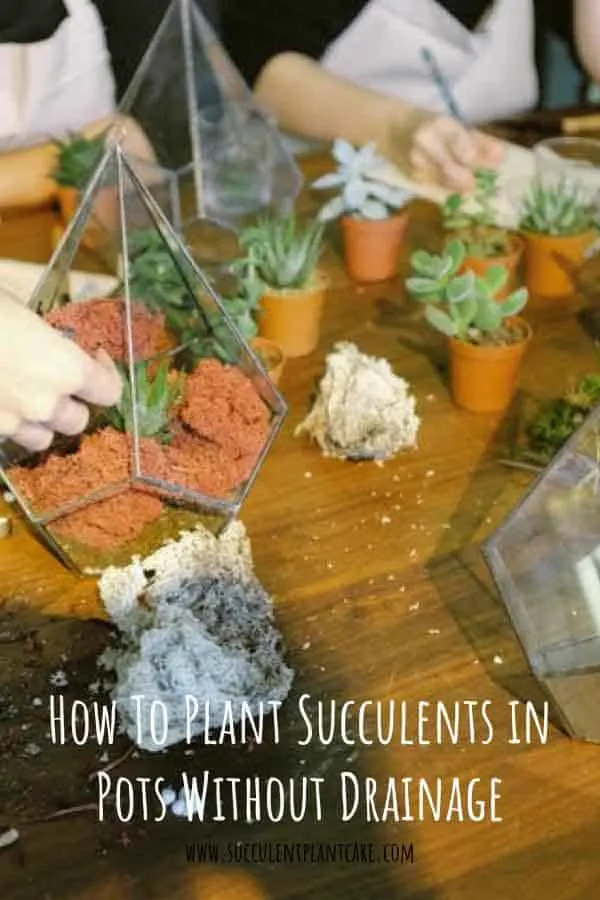Why is Drainage so Important for Succulents?
Whether you’re new to succulent planting or not, you know that the topic about drainage holes come up pretty often. Why are drainage holes important? They allow for excess water to seep out of the container to help prevent moisture from collecting at the base of the pot.
This is a big deal for succulents because they hold water in their tissues, leaves and stems. If they’re sitting in water too long, their roots are prone to root rot. Some people are sticklers for having drainage holes in all planters.

Others are not as concerned about holes. If you have a container you really want to use for planting succulents and cacti but you’re concerned about drainage issues, here are some things to consider.
To Drill or Not to Drill?
Drilling a hole into the planter is definitely an option, and you don’t have to be handy with tools to be able to do so. There are lots of free video tutorials you can find on how to get started with drilling a hole in ceramic, glass, etc. For step-by-step instructions on how to drill a hole in ceramic pots or glass, please click on “How to Grow Succulents in Pots without Holes”.
Things to Consider Before Drilling a Hole
Cost
What would it cost for you to drill a hole? Would it cost more to drill a hole or to purchase a pot with drainage? Most people already have a drill at home.
You probably only need to invest on some diamond drill bits which are not very costly. Even if you don’t have a drill and need to purchase one, you can think of it as a good investment when you consider the amount of usage you will get out of it.
Value
You need to consider what you value more: the pot or the plant. If it’s a very pricey pot that you paid a lot of money for, or maybe it’s an antique, you may want to reconsider drilling a hole in it for risk of damaging it. Plus, once you’ve drilled a hole into something, there’s really no turning back, it’s permanent.
So consider what’s more important to you, the value of the container or the plants. Luckily, succulent plants are not very expensive and are easy to replace. They are also easy to grow and propagate, which is why we love them so much.
Do Succulents Need Drainage?
Can succulents survive in pots without drainage? So you’ve decided to go ahead and plant the succulents in a container without holes. Will they survive and for how long? Yes, succulents can definitely survive and even thrive in pots without holes. It all depends on how you care for the plants.
The biggest problem that people encounter is with watering. People tend to overwater their succulents, which can be detrimental to these plants. Once you learn how to water succulents in pots without drainage, they can grow in there for a long time.
Here’s proof that succulents can survive for a long time in containers without drainage. In this case, the container gave out way before the plants did. These plants have outlived their container. As you can see, the plants are still going strong. They were in this container for about two years or so. How did I get them to survive this long? Mostly from good watering techniques and using the proper potting medium.
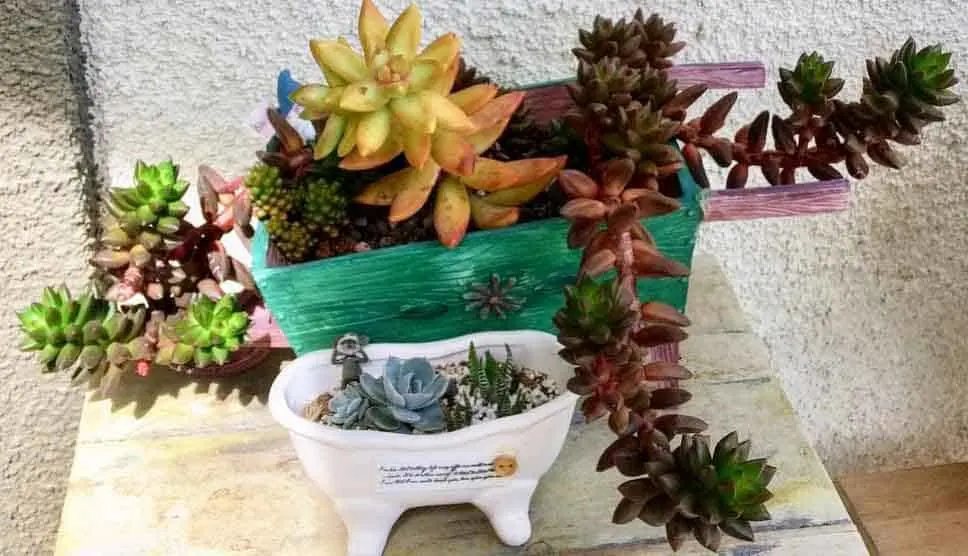
I have tried patching this up in the past with hot glue. After about two years, I thought it’s time to repot these plants.
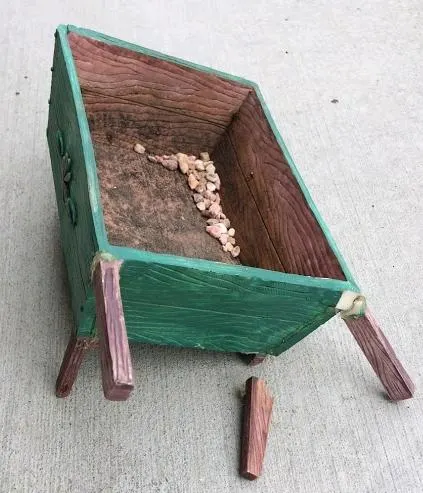
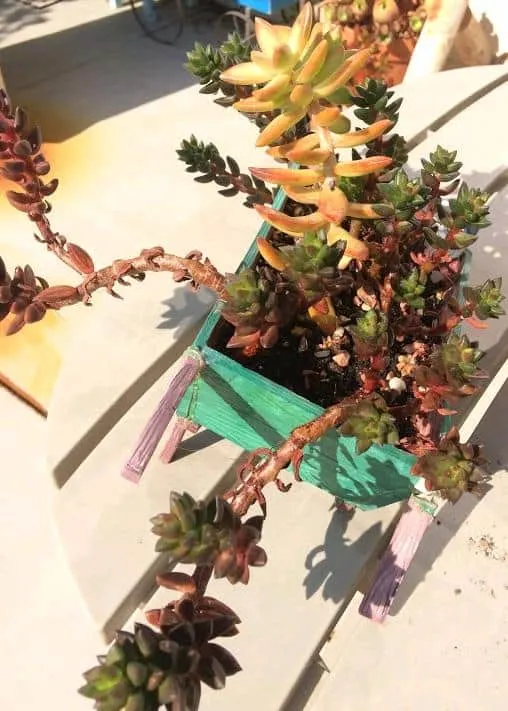
How to Plant Succulents in Pots without Holes
Use a Layer of Rocks
By adding a layer of rocks, pebbles, stones or pumice (or a combination of these) in the bottom of the pot, you can create a layer for drainage. This can help prevent root rot by allowing for excess water to drain out of the soil and into the rocks in the bottom. This helps prevent root rot by allowing the water to drain out of the soil faster and preventing the roots from sitting in wet soil for too long.
Consider the size of the pot. If your pot is small then you would mostly need pebbles and pumice, or smaller rocks. The larger the pot, you’ll need bigger and more rocks.
Aside from adding a drainage layer, you can also mix pebbles, rocks, pumice, or perlite into the cactus potting mix. Soil is usually very compact, and adding bigger particles into the soil creates more space between them, allowing for water to drain out quicker and preventing the roots from sitting in wet soil too long.
Use Activated Charcoal
Activated charcoal helps absorb excess water. It also contains natural antimicrobial properties which can help prevent bacterial and fungal growth. You can add a layer of activated charcoal, about ½ inch in the bottom of the pot or over the rock layer.
Activated charcoal is optional but if you are looking for extra drainage and absorption, it’s a good option to have. If the pot you’re using is small, you may not be able to use activated charcoal. To find out where to purchase activated charcoal online, please click on my resource page.
Use the Right Pot Size
The larger the pot, the more soil you’ll need. More soil means more water is held in the soil. Look at the plants you are using and choose the pot size accordingly.
Small plants do not need large pots. If you are repotting, a good rule of thumb to remember is: no more than 1-2 inches bigger in diameter than the original pot. Succulents prefer a snug pot anyway, so they do not need a lot of extra room.
How to Water Succulents Without Drainage
The key to the plants’ survival in pots without holes is in your watering techniques. Remember that excess water cannot drain out of the pot so go easy on watering. If you’re the type to overwater your plants, you really need to pay extra care in how you water plants without holes. Allow plants to dry out in between waterings and feel the soil for moisture.
Use a Syringe or Spray Bottle
It might be helpful to use a syringe, a spray bottle, or squeeze bottle to help control the amount of water you put into the containers. When using a spray bottle, make sure to spray the soil instead of the surface of the plant. You want the water to get to the roots where it is absorbed by the plant.
When and How Often to Water
When and how often to water depends greatly on the climate you live in, the growing season, and the size of your container. Plants tend to need more water during the dry and growing season. During the cooler months and inactive growing season, plants need less water. I usually pay attention to the plant to figure out when and how often to water. Generally speaking, I water about once every 7-10 days during the summer months and I cut down on watering to between 10-14 days or longer during the colder months.
I keep my plants outdoors all year long and they get plenty of sunlight. I also live in a very dry climate and it gets hot in the afternoon sun. If you live in a climate with high humidity, you do not need to water as much.
If you do not know where to start, water the plants lightly and increase watering as needed. It is better to under water than to over water until you figure out the plants’ watering needs.
Get Rid of Excess Water
If you accidentally poured too much water, you can empty out the excess water by carefully tipping the pot over while holding down the plants so they don’t fall out. You can also use a dry towel or paper towel to dab the excess water.
Move the Pot During Rain
If your plants are kept outdoors, make sure to move the pots without holes under the shade when there’s forecast of rain. If you forget to move the pots and they get rained on, pour out the excess water as soon as you can.
A good way to tell if your plants are in need of more water is when they start to shrivel. This usually happens with the leaves first. When you touch the plant and it feels soft and not plump, it is usually a sign that you are underwatering.
Time to Repot
Let’s say you tried all of these but you notice that the plants are not doing well. No worries. Succulent plants are very forgiving plants. You can remove the plants and repot elsewhere. They often bounce right back when given the proper care that they need.
In this case, the plants are doing well but the pot isn’t. Here’s how I repotted these plants. I wanted them to multiply so I took stem cuttings and planted them in different pots. As always, I used a cactus potting mix combined with perlite for better drainage.
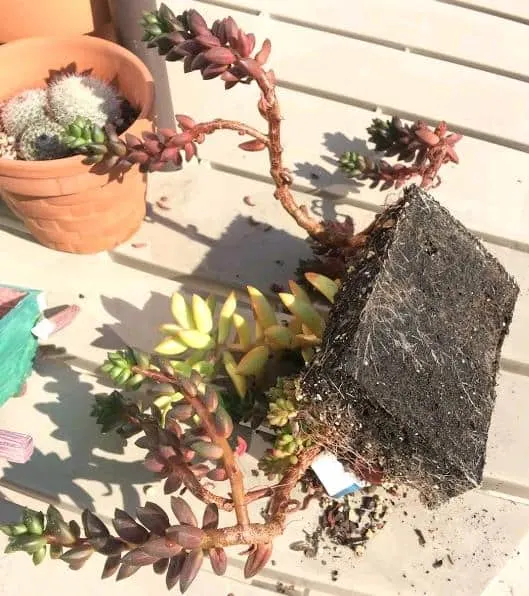
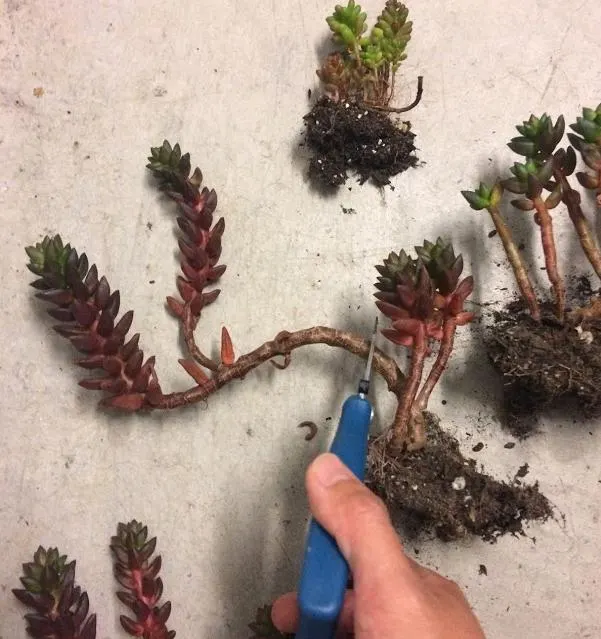
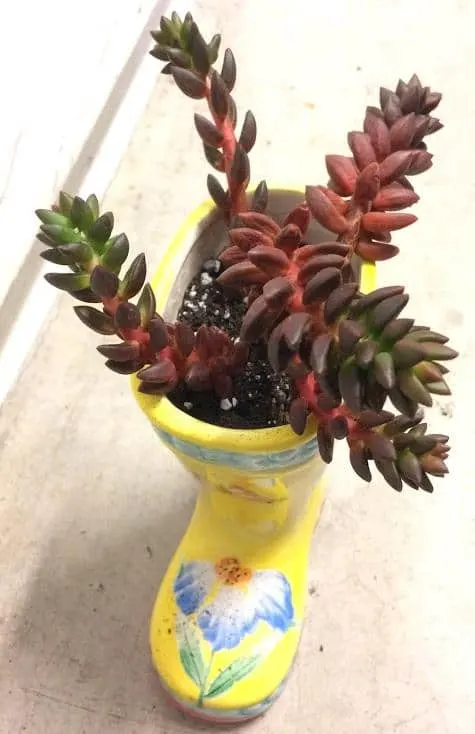
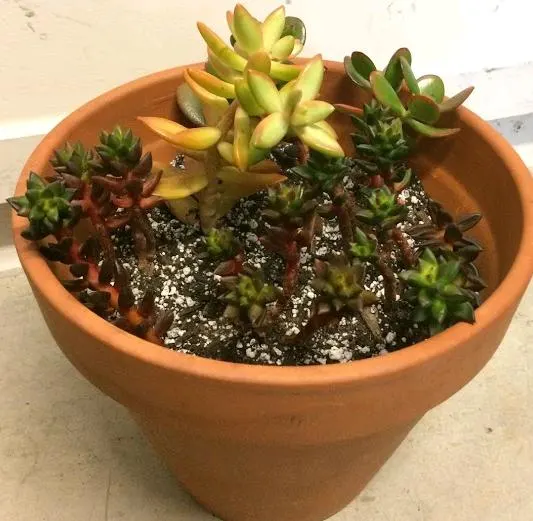
I separated them in two pots. I also added jade cuttings from my previous project here. Stem cuttings is my preferred method to propagate and multiply my succulent collection. I find it to be the easiest and with the highest success rate. Please click on “Easiest Way to Propagate Succulents: by Stem Cuttings” to read more.
For more on pots without drainage, please click on “How to Grow Succulents in Pots without Drainage.”
If you are looking for tools to measure the moisture in the soil and in the air, moisture meters and hygrometers may do the trick. Please click on my resource page for ideas.
